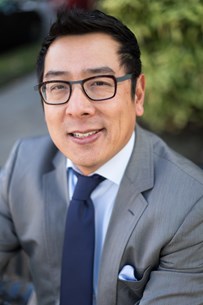Meeting
2014 Genitourinary Cancers Symposium

University of Washington/Seattle Cancer Care Alliance, Seattle, WA
Evan Y. Yu , Robert H. Getzenberg , Jordan Smith , Michael L. Hancock , Matthew Raymond Smith , S. Bruce Malkowicz , Paul Sieber , James T. Dalton , Mitchell S. Steiner
Background: The goal of medical androgen deprivation therapy (ADT) for advanced prostate cancer is to provide an equivalency to orchiectomy based upon older assays for serum testosterone (T). Literature shows that based on more modern assays, medical ADT does not always provide optimal total T suppression equivalent to orchiectomy. With the understanding that free, or unbound, T is the biologically and clinically relevant component, the therapeutic goal of ADT should be to decrease free T to levels similar to orchiectomy. Free T has not been well studied in a substantial number of orchiectomized men. The purpose of this study was to examine a subpopulation of orchiectomized men in a clinical trial to determine the level of serum-free T in advanced prostate cancer. Methods: Baseline data was utilized from a double blind, randomized, placebo controlled trial (G300203) to determine the capacity of toremifene 80 mg to prevent bone fractures in men on ADT. This study included 1,389 men from 150 sites in the U.S. and Mexico. Baseline characteristics, including whether men were on medical ADT or status post orchiectomy, were available. Free T levels were assayed at baseline by radioimmunoassay (RIA) (Diagnostic Products Corporation) and are reported for men who underwent orchiectomy. Results: A subpopulation of 114 men underwent orchiectomy. Median age was 76 (range 51 to 90). Median serum free T level was 0.92 pg/ml (min. 0.35 pg/ml and max. 33.95 pg/ml) with a mean level of 1.71 pg/ml ± 2.77. Conclusions: This study is believed to be the largest cohort in which free T levels have been reported in men who underwent orchiectomy. In this cohort, median serum free T is approximately 0.9 pg/ml. This value could be considered to be the optimal testosterone suppression of free T with orchiectomy and represents the goal of medical ADT. At the time this study was performed, RIA was considered to be the standard but has since been shown to underestimate free T levels by 20 to 60%. Currently, equilibrium dialysis coupled with LC-MS/MS is the gold standard, but the results from this analysis provide us with increased understanding of the optimal level of free T in treating advanced prostate cancer. Clinical trial information: NCT00129142.
Disclaimer
This material on this page is ©2024 American Society of Clinical Oncology, all rights reserved. Licensing available upon request. For more information, please contact licensing@asco.org
2014 Genitourinary Cancers Symposium
Poster Session
General Poster Session A: Prostate Cancer
Prostate Cancer
Prostate Cancer
NCT00129142
J Clin Oncol 32, 2014 (suppl 4; abstr 144)
10.1200/jco.2014.32.4_suppl.144
144
J3
Abstract Disclosures
2024 ASCO Genitourinary Cancers Symposium
First Author: Patrick Campbell
2024 ASCO Genitourinary Cancers Symposium
First Author: Andrew Leonard Laccetti
2024 ASCO Annual Meeting
First Author: Ted Van Alstyne
2022 ASCO Genitourinary Cancers Symposium
First Author: Ronald F. Tutrone